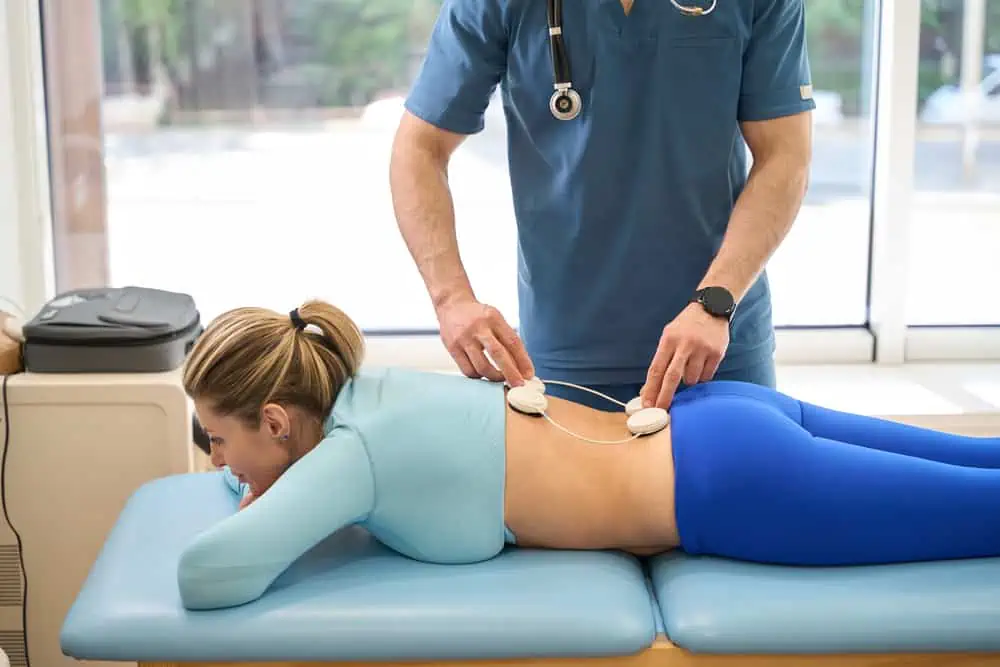Trigeminal neuralgia is a chronic pain disorder that impacts the trigeminal nerve, one of the most widely distributed nerves in the head. The condition is characterized by intense, electric shock-like facial pain that can occur spontaneously or be triggered by routine activities such as eating, talking, or touching the face. Often described as one of the most painful conditions known to medicine, the unpredictability and severity of the pain can significantly impact a person’s quality of life.

The origin of trigeminal neuralgia pain is usually linked to a compression of the nerve, often by a blood vessel that causes the nerve to malfunction. The pain typically affects one side of the face, with rare instances involving both sides. Diagnosis is primarily based on the patient’s description of symptoms, along with a comprehensive neurological examination. Treatment options range from medication to various surgical procedures aimed at relieving nerve pressure or destroying the nerve fibers responsible for pain transmission.
Key Takeaways
- Trigeminal neuralgia causes sudden, severe facial pain often triggered by everyday activities.
- Diagnosis relies on symptom description and neurological examination, aiming to rule out other conditions.
- Treatment can involve medications, surgery, or non-invasive therapies to manage pain and improve life quality.
Understanding Trigeminal Neuralgia
In our exploration of Trigeminal Neuralgia (TN), we focus on the fundamental aspects of the condition, starting with its definition and prevalence across populations.
Definition and Overview
Trigeminal Neuralgia is a chronic facial pain condition affecting the trigeminal nerve, the primary nerve responsible for sensation in the face. Those living with TN experience episodes of sharp, electric shock-like pain on one side of the face that can be triggered by very light touch. This facial pain is typically felt in a rapid succession that can be both debilitating and severe.
Epidemiology
TN is a relatively rare condition, with incidences reported to be about 12 per 100,000 persons annually. Although it can occur in anyone, we notice that TN is more common in women than men and typically presents itself after the age of 50. However, when younger individuals are affected, the distribution between men and women is more equal. The condition brings significant challenges not only to patients but also to clinicians aiming for effective management.
Causes and Triggers
In this section, we explore the specific factors that contribute to the onset of Trigeminal Neuralgia, including its primary causes and secondary factors, as well as the everyday actions that can trigger the intense facial pain characteristic of this condition.

Primary Causes
The primary causes of Trigeminal Neuralgia mainly involve nerve compression, typically where the root of the trigeminal nerve is squeezed by a nearby blood vessel. This constant pulsating pressure can lead to irritation and damage of the protective myelin sheath around the nerve, causing erratic and hyperactive signaling which we perceive as pain.
- Vascular Compression: The most common situation is when a blood vessel compresses the trigeminal nerve near its connection to the brainstem.
- Multiple Sclerosis (MS): MS may damage the myelin sheath of the trigeminal nerve, making it more prone to malfunction.
Secondary Factors
In other cases, Trigeminal Neuralgia can arise from secondary factors where other medical conditions are the underlying cause:
- Multiple Sclerosis: By deteriorating the myelin sheath that covers nerve fibers, MS can induce symptoms similar to those of classic Trigeminal Neuralgia.
- Tumors: Rare instances include the nerve being compressed by a tumor.
Common Triggers
We recognize certain activities as common triggers due to their ability to provoke episodes of facial pain, even with the lightest touch or motion. Simple daily tasks can inadvertently activate intense pain in individuals with Trigeminal Neuralgia.
- Lightly touching the face, such as when applying makeup or shaving.
- Actions involving the mouth, including eating, chewing, drinking, brushing teeth, or even smiling.
Symptoms and Diagnosis
Trigeminal neuralgia is characterized by facial pain that can be extremely severe. We will discuss its typical symptoms, the variations known as atypical trigeminal neuralgia, and the diagnostic procedures that healthcare professionals employ to confirm this condition.

Typical Symptoms
Trigeminal neuralgia often presents as sudden, intense episodes of electric shock-like or shooting pain. The facial pain typically affects one side of the face and can be triggered by everyday activities such as chewing, speaking, or brushing teeth. These outbursts of sharp and stabbing pain can last from a few seconds up to two minutes.
Atypical Trigeminal Neuralgia
In contrast to the classic form, atypical trigeminal neuralgia manifests as a persistent burning sensation, ache, or numbness along with occasional sharp pain. This variant of pain may not display the intermittent, shock-like quality that is a hallmark of the typical form but can still cause significant discomfort and impact daily activities.
Diagnosis Process
To diagnose trigeminal neuralgia, a thorough neurological exam is essential. This includes detailed patient history and a description of the pain. Additionally, magnetic resonance imaging (MRI) may be conducted to rule out other causes of facial pain and to examine the trigeminal nerve. Diagnostic tests aim to ensure accurate identification of the nerve affected and to assess the nature of the pain to guide an effective treatment plan.
Treatment Options
When it comes to Trigeminal Neuralgia, we understand that effective management hinges on the right treatment strategy which often begins with medications and, if necessary, progresses to surgical interventions.
Medications
Initially, we often recommend anticonvulsants such as carbamazepine, which has been the mainstay for pain control in trigeminal neuralgia. Some of us may also prescribe other nerve pain modifiers including gabapentin, oxcarbazepine, lamotrigine, phenytoin, and baclofen. For those who experience side effects or inadequate pain relief, alternatives like pregabalin and topiramate can be considered.

- Anticonvulsants: To stabilize nerve impulses
- Common options:
- carbamazepine
- gabapentin
- oxcarbazepine
- lamotrigine
- phenytoin
- Common options:
- Muscle Relaxants: Mainly baclofen to control spasms that may accompany the neuralgia
Surgical Interventions
Should medications prove insufficient, we examine surgical options. Microvascular decompression aims to alleviate nerve compression from blood vessels. Less invasive choices like stereotactic radiosurgery (Gamma Knife) aim to target nerve roots that cause facial pain. Other procedures include rhizotomy, wherein nerve fibers are destroyed to block pain signals, and balloon compression, which uses a balloon to compress the nerve and hinder painful attacks.
- Microvascular Decompression: Relieves pressure by moving or removing blood vessels
- Stereotactic Radiosurgery (Gamma Knife): Precision-targeted radiation to reduce nerve sensitivity
- Rhizotomy and Balloon Compression: Interventions to disrupt pain signal transmission at the nerve
Non-Invasive Therapies

When it comes to managing Trigeminal Neuralgia, we have a variety of non-invasive therapies at our disposal that can mitigate pain without resorting to surgical intervention.
Radiosurgery and Injections
One of the sophisticated non-invasive options we consider is Gamma Knife radiosurgery. This precise form of radiation therapy can target specific areas where the trigeminal nerve is affected. Following treatment, patients may experience relief after a few weeks or months as nerve sensations normalize.
We also have the option to administer glycerol injections. This procedure involves injecting a small amount of glycerol around the nerve where it splits into three branches. This can block pain signals and provide relief for a significant period.
- Radiosurgery: Painless delivery of focused radiation
- Glycerol Injection: An outpatient procedure causing minimal discomfort
Both options are attractive because they allow patients to resume their daily activities soon after treatment.
Alternative Treatments
Alternative therapies can complement traditional medical approaches, and in our practice, we’ve found particular success with methods such as acupuncture and biofeedback training.
- Acupuncture: Involves inserting thin needles at specific body points, believed to stimulate nerves and muscle tissues, potentially offering pain relief.
- Biofeedback: Utilizes electronic monitoring to teach patients how to consciously control certain bodily functions, such as muscle tension and heart rate, which can be beneficial for managing facial pain.
Additionally, we encourage patients to practice meditation as a way to manage the psychological aspects of chronic pain. These alternative treatments are valuable because they empower patients with tools to manage their condition.
- Meditation: An effective non-drug method for stress and pain management.
By incorporating these non-invasive therapies, we aim to reduce the discomfort associated with Trigeminal Neuralgia and improve our patients’ quality of life.
Living with Trigeminal Neuralgia

Dealing with Trigeminal Neuralgia (TN) is a lifelong journey that affects various aspects of our daily lives. Our approach to managing pain and adapting lifestyle choices can play significant roles in improving our quality of life.
Managing Chronic Pain
Chronic pain due to TN can manifest as intense, electric shock-like sensations or a constant burning that impacts our facial region. To cope with this neuropathic pain, we often require a combination of treatments. Medications, such as anticonvulsants and muscle relaxants, are the first line of defense; they aim to stabilize nerve activity and alleviate pain. Surgical options, although not a cure, might provide relief when medications are not effective.
Medication Regimen
- Anticonvulsants: The cornerstone in managing TN pain, helping to reduce nerve impulses.
- Muscle Relaxants: May be used alongside anticonvulsants to ease muscle spasms.
For some of us, complementary therapies like acupuncture or biofeedback offer an added layer of pain management, though always consult with a specialist first. For individuals with refractory TN, surgical procedures might suppress symptoms for a while, even if not permanently.
Lifestyle and Coping
Living with the unpredictability of TN requires us to adapt our lifestyle to better manage potential triggers. Simple daily tasks, such as brushing teeth or applying makeup, might provoke an attack. Modifying how we perform these activities can minimize discomfort and preserve our facial numbness.
Daily Adjustments
- Use a soft-bristled toothbrush.
- Avoid exposure to drafts or wind.
Beyond physical adjustments, emotional support is paramount. We gain immense benefits from sharing our experiences and strategies within support groups. Engaging with others who understand what we are going through helps us feel less isolated and equips us with new coping mechanisms.
Maintaining open communication with our healthcare providers ensures we are on a treatment plan tailored to our needs. Together, we work towards maintaining our overall well-being, and while TN is a part of our lives, it does not define them.
Recent Advancements

In the ongoing battle against Trigeminal Neuralgia (TN), we’re witnessing exciting progress, specifically in the realms of research and development of new treatments. Leveraging the best of neuroscience and medical technology, these advancements promise to enhance patient outcomes through precision-driven care.
Research and Development
The National Institute of Neurological Disorders and Stroke (NINDS) plays a crucial role in expanding our knowledge base about TN. They are at the forefront of funding research that seeks to elucidate the mechanisms underlying this condition. Through this rigorous scientific inquiry, researchers are unveiling new insights into the pathology of TN, laying the groundwork for the next generation of therapies.
Emerging Therapies
Clinical trials and medicine are converging to bring forth emerging therapies that offer hope for individuals living with TN. Advances in medical technology, such as CT-fluoroscopy, provide real-time visualization of needle advancement, enhancing the accuracy and safety of interventions. Other promising treatments include Motor Cortex Stimulation (MCS), which has been reported to significantly reduce pain in TN patients. These therapies are not just conceptual; they are tangible fruits of relentless research and clinical trials aimed at finding sustainable relief for patients.
Frequently Asked Questions
In this section, we explore common queries about trigeminal neuralgia, addressing topics from diagnosis to treatment options for facial pain.
What treatments are available for managing trigeminal neuralgia?
We often treat trigeminal neuralgia with a variety of approaches, including medications to lessen nerve pain, such as anticonvulsants and muscle relaxants. In cases where medication is insufficient, other interventions, including surgical procedures and non-surgical options, can be considered.
How is trigeminal neuralgia typically diagnosed?
We diagnose trigeminal neuralgia primarily based on the patient’s description of the facial pain, which often involves sudden, electric shock-like sensations. Detailed patient accounts help us determine if the trigeminal nerve is involved.
Are there any surgical options that can provide relief from trigeminal neuralgia?
Yes, surgical options are available and may provide relief when medications are not effective. Procedures like microvascular decompression can relieve pressure on the nerve, while other surgeries might involve damaging the nerve to reduce pain signals.
What medications are commonly prescribed for trigeminal neuralgia facial pain symptoms?
Commonly prescribed medications include anticonvulsants, such as carbamazepine, which are used to block nerve firing, and muscle relaxants like baclofen, which can help ease spasms associated with the condition.
Can alternative therapies, such as Botox, be effective in treating trigeminal neuralgia?
Alternative therapies, like Botox injections, have shown effectiveness in providing relief for some patients by temporarily reducing nerve activity responsible for the pain.
What are the potential side effects or complications associated with trigeminal neuralgia treatment?
Treatments for trigeminal neuralgia can come with potential side effects, such as dizziness or drowsiness from medications, and more serious risks are associated with surgical options, including facial numbness or hearing loss. It is critical to discuss these with a healthcare provider.











